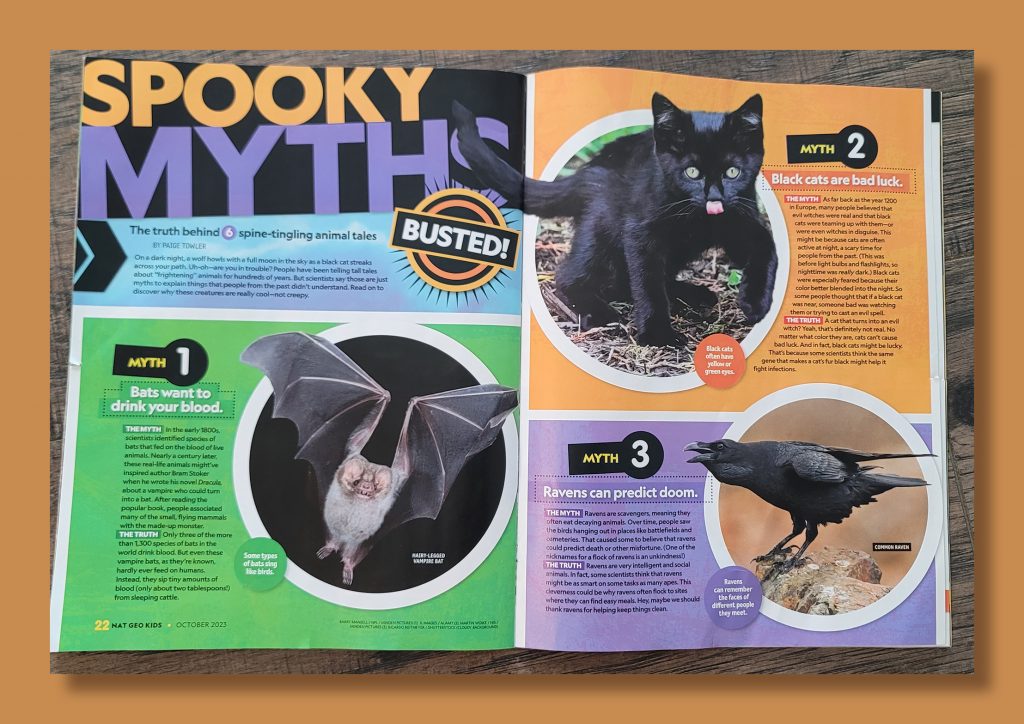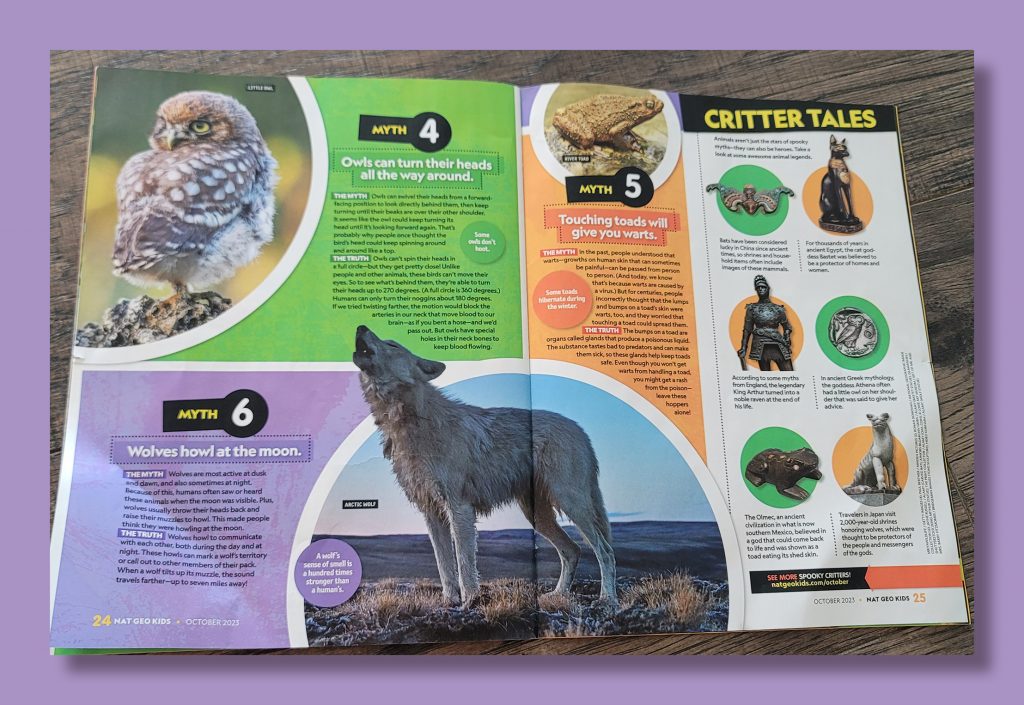Do you think black cats are bad luck? Or that wolves howl at the moon? In this summary, 6 well-known myths will be debunked and proven to be false. Let’s get started!
The first myth is that bats want to drink your blood. If you’ve ever heard of Dracula, you might know where that myth came from. Scientists pointed out some bats that feed on animals’ blood in the early 1800s. Several years later, someone wrote a story about Dracula, a vampire that can turn into a bat. Many people started associate bats with vampires. The story is fictional, and only three species of bats drink blood. However, they guzzle tiny amounts from specific animals and wouldn’t feed off of humans.
The second myth is that black cats are bad luck. Multiple people think that black cats are bad luck; even I used to! In the year 1200, people believed in evil witches and associated them with black cats. Some witches were thought to turn into cats to seem innocent. Cats are nocturnal and active and night, which was a frightening time in the past. It was extremely dark without light sources, and black cats could camouflage easily. Some thought a black cat being near meant a witch was trying to cast a spell. However, this myth has been debunked. Cats don’t really cause bad luck, and their color doesn’t make a difference. Plus, black cats might be lucky since they have a specific gene that helps it fight infections and makes them black.
The third myth is that ravens can predict doom. Often, ravens are found at cemeteries and battlefields, so some people believed they could predict misfortunes. It was proven wrong, though. Ravens are intelligent creatures; they go to cemeteries and battlefields to eat decaying animals. There are some easy meals there, which is why they’re frequently seen there. A fun fact about ravens: they can remember the faces of different people they encounter. That sounds pretty amazing, right?
The fourth myth is that owls can turn their heads all the way around. They can turn their head to look behind their shoulders. Because their heads appear to be so flexible, people think they can turn their heads in a full 360 degree circle. As marvelous as that seems, it’s not exactly the case. Owls actually can turn their heads around a 270 degree circle. They can’t move their eyes, so owls move their heads in order to glance at something. Owls can turn their heads farther than we can since they have holes in their neck bones to keep blood flowing. If we tried turning farther than 180 degrees, we would pass out because the blood can’t keep flowing. Owls are obviously wonderful creatures, and even though they can’t turn their head all the way around, they can still do it 270 degrees!
The fifth myth is that touching toads will give you warts. People knew about warts in the past and how they can be passed from one person to another, like the flu or a cold. People used to think warts were caused by touching toads since they have peculiar bumps on their skin. The myth has been debunked since the bumps have been proven to not be warts. They’re actually glands that produce a poison. It tastes horrible to predators and makes them ill, so toads can be safe from animals trying to devour them. However, if you touch a toad’s poisonous glands, you can get a rash.
The last myth is that wolves howl at the moon. They usually are active at dusk, dawn, and nighttime, which is when the moon is around. People believe wolves are bellowing at the moon, but it’s not true. Even though wolves are vigorous at specific times of the day, the howling is mainly used for communication with other wolves. Howls can also be used to mark a wolf’s territory so that other wolves know. This sound can travel up to 7 miles away from the source! They must have some powerful lungs.
I hope that you have learned about the truths behind these myths and learned a few intriguing facts from this summary! Animals are truly wonderful, and even though these myths aren’t true, the truth is just as pleasant and interesting to hear about.
Written by Kruti Patel


